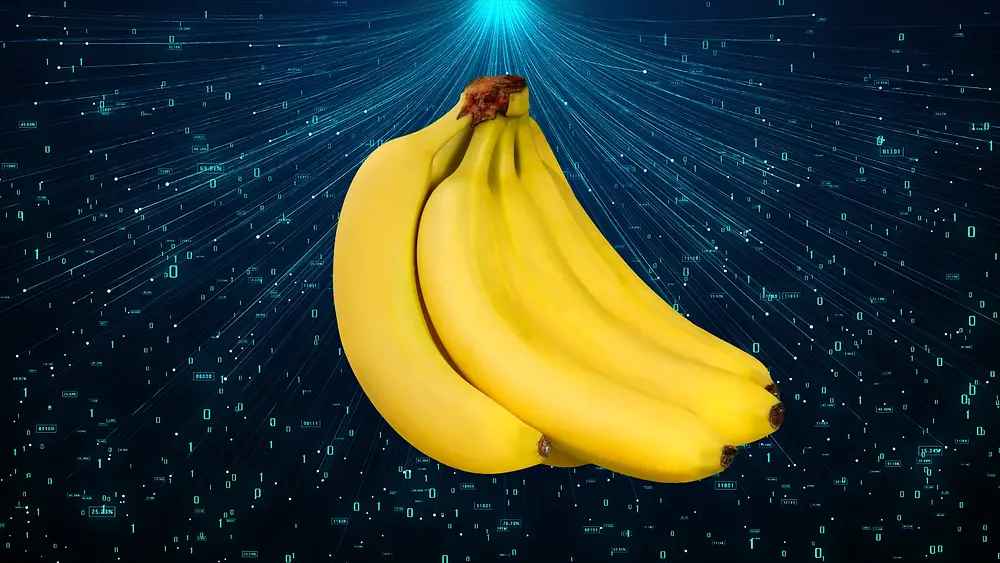If you follow the world of artificial intelligence, you know it moves fast sometimes so fast that brand new models appear without announcements or glossy press releases. One such mysterious entry is the nano banana AI image model.
The name sounds odd, almost playful, but for many digital artists and researchers who have seen its outputs, this tool feels anything but a joke. It could be the start of something big, and many suspect Google is quietly behind it.
The first hints came not from Google’s blog or an AI conference, but from LMArena, a benchmarking website where AI models compete head to head. Users type a prompt, two models generate results, and voters pick the winner without knowing which model produced which image.
A few weeks ago, people began noticing a new model in the mix. Its results stood out immediately clearer details, realistic lighting, and uncanny consistency across multiple edits. Soon enough, users identified the mysterious competitor by its quirky label the nano banana AI image model.
The name raised eyebrows, but the quality of images raised even more. Could Google be testing its next major release under disguise?
Why This Model Stands Out
1. Precision in Understanding Prompts
One major frustration with AI art tools is their tendency to miss small details. Ask for a child holding a red balloon in the rain, and you might get the balloon but no rain, or a child standing awkwardly with extra fingers. In contrast, the nano banana AI image model handles layered requests with surprising accuracy.
2. Coherent Editing Abilities
Another strength is editing existing images. Many models struggle with perspective, shadows, or keeping a subject consistent across changes. Here, the new model shines it edits while preserving the natural flow of the scene.
3. Speed and Efficiency
Reports from early testers describe the model as almost instant. For creators on deadlines, speed matters as much as quality, and the nano banana AI image model seems built with both in mind.
Expert Opinions on the Mystery Model
While Google has not officially confirmed involvement, AI researchers have weighed in. Dr. Emily Sanchez, an AI researcher at Stanford, commented. The quality suggests access to massive datasets and compute resources.
Few players outside Google or OpenAI could produce such results, which makes the connection to Google plausible. AI industry blogger Mark Reynolds wrote We’ve seen hidden releases before.
Companies often test prototypes quietly to gather unbiased feedback. The nano banana model feels like exactly that an undercover stress test. Their insights reflect a growing belief this may be more than a hobby project.
Complex Character Swaps
A Reddit user asked the model to replace a figure in an image with Master Chief from Halo and another with 2B from Nier Automata. The result stunned the community. The characters looked authentic, well lit, and naturally integrated into the background a task where many existing models fail.
A designer tested the model by asking it to soften the right side lighting on a portrait. Instead of washing out the image, the model adjusted shadows subtly, almost like a skilled photographer would.
Rapid Multi Step Editing
Another creator layered instructions change the background, adjust the character’s pose, and add reflections. The nano banana AI image model managed all edits in sequence while maintaining coherence, something rarely seen in current public tools.
On creative forums, artists shared their excitement. One illustrator said, This is the first AI tool that doesn’t fight me. It feels like a collaborator, not a replacement. A photographer noted, It’s scary good at edits.
I spent less time fixing AI mistakes and more time finishing my vision. For many, the experience was refreshing. Instead of fixing awkward AI artifacts, they could focus on creative direction.
Is Google Really Behind It?
The speculation isn’t random. Several hints point toward Google. The word nano aligns with Google’s recent strategy of building lighter, faster models. Employees have been posting cryptic banana emojis on social media, fueling curiosity.
The model’s polish suggests backing by one of the largest tech companies, not a small startup. While unconfirmed, the puzzle pieces fit. If true, the nano banana AI image model could be part of Google’s larger Gemini or Imagen ecosystem.
The rise of this model isn’t just about better pictures. It signals deeper shifts, Tools that understand natural language more precisely make creativity accessible to non experts. Faster generation opens new use cases for media, marketing, and design industries.
If the model can consistently preserve details and context, users may rely on it more than other AI tool. If Google is indeed behind it, this raises the stakes in the AI race against OpenAI, MidJourney, and Adobe Firefly.
Limitations Still Exist
Like every tool, this model isn’t perfect. Early testers report, Text rendering remains unreliable AI still struggles with lettering. Complex body anatomy, like hands, sometimes glitches.
Rarely, unusual lighting or reflections confuse the system. Still, compared to its peers, these flaws feel minor. If the nano banana AI image model is truly a Google project, an official launch could reshape creative industries.
Designers, marketers, and casual creators alike may find themselves using AI not as a gimmick but as a reliable tool. Until then, it remains a fascinating mystery. The bananas may just be a playful hint or a clever marketing trick.
The nano banana AI image model might have a silly name, but its impact is serious. With unmatched precision, editing ability, and speed, it’s winning hearts in creative communities.
Whether confirmed as a Google experiment or not, one thing is clear this model represents a leap in how humans and AI collaborate.
As more people test it on LMArena and beyond, its reputation will only grow. And if Google pulls back the curtain, the world may discover that the future of AI creativity was hiding behind a banana all along.

